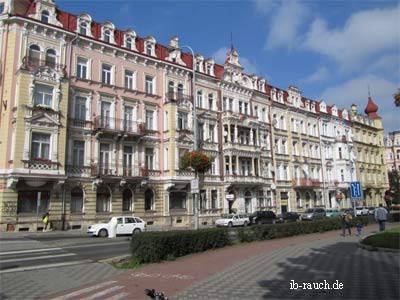If you have the desire to build an ecological and economical house, all you have to do is look at the historical residential buildings in your area. Over the centuries, certain architectural styles have developed depending on the local location and the prevailing climate. These are based on experience and are usually adapted to the climatic and living biology requirements. This applies not only to the regions in Germany, but also to all other parts of the country on earth.

In Central and Southern Europe and in North Africa, massive buildings with large heat storage capacities are being erected. By contrast, in Northern Europe, as in Sweden and Canada, buildings are built using lightweight construction with good thermal insulation properties. Some years ago I had to carry out a consultation for such a building in block construction in Canada. Because of the constantly frozen ground, it is not possible to build a foundation.
Especially today, when we spend up to 90% of our time in buildings, the buildings should not have any negative health effects on us. The current settlement and building policy pursues completely different goals. These are, for example, conurbations and dwellings crammed with electronics, which of course has positive but also negative aspects.
In northern Germany, brick (brick) buildings predominate, and in southern Germany, houses in wooden block construction with large roof overhangs have proven their worth. In Thuringia and in the Harz Mountains, half-timbered buildings dominate. In Saxony, on the other hand, there are buildings made of quarry stones, rammed earth or half-timbered buildings.

Biologically healthy houses consist of the building materials of mother earth, such as clay, woo or reed.
Do you get tired very quickly at home or in the office? This is a sure sign that the building is wrongly constructed. It drains your energy!
However, residential buildings are constructed from building materials with high energy input (cement, steel, aluminium or plastic). The human being is a biological being, which is in harmony with its environment. Every energy input for the production of a building material passes back into its environment (corrosion) until a balance between the individual energy levels is achieved. Metals, concrete or plastics are not found in nature.
It is conceivable that the unnatural energy of these building materials has a stronger effect on our torus field, as assumed, and with other external influences, such as household chemicals, electromagnetic radiation (WLAN, especially G5 networks), etc. makes us ill. In contrast, natural building materials, such as wood or clay, have only a low energy input. It is conceivable that the energy released by the natural building materials has a harmonious and balancing effect on our well-being.

It is therefore worth considering whether to build a house for yourself and your family where as few unnatural building materials as possible, such as polystyrene, are used. The city as a place of residence should also be avoided. Prof. Anton Schneider (former director of the Institute for Building Biology + Sustainability IBN) tells Georgi Sidorov that the city is a death machine.

1. The current building trend is determined by the eco-industrial complex.
2. Energy saving and the renovation of old residential buildings.
3. What is an energy saving house?
4. The policy provides for houses and flats that make people ill.
5. Which is the right residence?
6. Build a house ecologically and economically.
7. The building culture and construction
8. If you build your own home, then the building laws must be observed!
9. A home of our own for the protection of our family and our health or just a capital investment?
10. Find the right information in the jungle of building information.
11. You as a builder-owner have to finance all building measures and conditions!
12. The wrong housing construction and the housing shortage
13. How is knowledge generated in the construction sector?
© Bauratgeber24 | Index | Inhalt | Bauideen | andere Länder | Bücher für den Bauherrn | Download | Datenschutzerklärung | 11/2018 ![]()